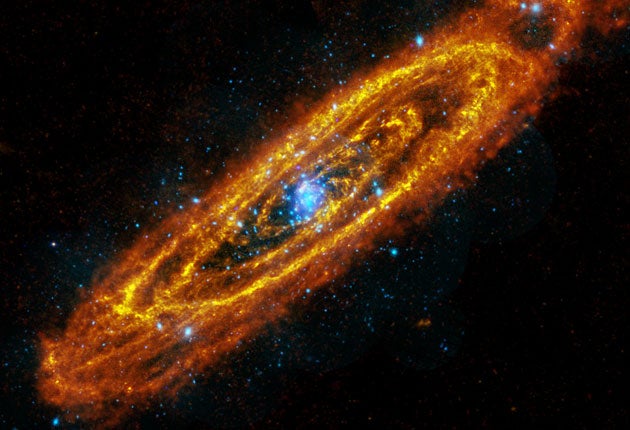A glimpse deep into a galaxy far, far away

Persian astronomers in the 10th century first documented the Andromeda galaxy using nothing but the naked human eye. They called it the "little cloud" and since then our nearest galactic neighbour has been captured countless times by the most advanced telescopes.
But nothing quite matches this picture released by the European Space Agency (ESA). It is a composite image made from radiation at different ends of the electromagnetic spectrum and gathered almost simultaneously by two observatories in space.
The infrared radiation, shown in orange, was captured by the Herschel space telescope and emanates from the dust clouds that form concentric circles within the galaxy where new stars are forming. The blue points of light are X-rays detected by the XMM-Newton observatory, typically emitted from older stars at the end of their life.
ESA scientists said that Herschel can see into the cosmic clouds where new stars are forming in the many "dusty cocoons". Here, over many hundreds of millions of years, stars are being born as gravity draws cosmic dust into a dense fireball that triggers nuclear fusion and the release of light – the moment when a star begins to shine.
The Herschel image shows at least five concentric rings of star-forming dust. The brightest ring, some 75,000 light years across, may be the result of an earlier collision with a smaller galaxy, astronomers suggested.
The blue points of light come from the shock waves of exploded stars or stars that have become locked together in a gravitational fight to the death. In these deadly embraces, ESA said, one star has already died and is pulling gas from its still-living companion.
Subscribe to Independent Premium to bookmark this article
Want to bookmark your favourite articles and stories to read or reference later? Start your Independent Premium subscription today.

Join our commenting forum
Join thought-provoking conversations, follow other Independent readers and see their replies